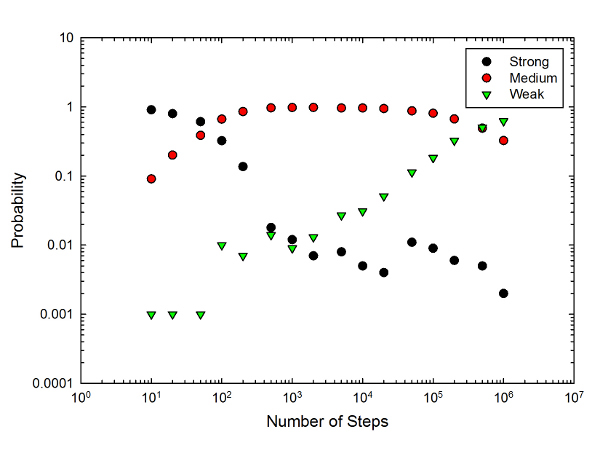Over at Wired, Rhett has a post providing mathematical proof that he takes too many photos. As is traditional, he includes homework at the end of the post, specifically: Now it is your turn. Find the number of photos you have taken each year. Is it possible for you to detect changes in your life… Continue reading The Growth of My Digital Photography
Month: May 2015
Hugo Reading: Not-Novels
As much for my own future reference as anything else, some thoughts on the bits of the Hugo ballot that aren’t Best Novel (which I’ve already talked about). At this point, I’ve probably read as much of the voter packet as I’m going to (though if I’ve left out something actually good, I could go… Continue reading Hugo Reading: Not-Novels
All We Are Saying Is Give Physics a Chance
Last week, the blog Last Word On Nothing did a piece on the best and worst sciences to write about, and the two writers tapping physics as the worst said things that were really disappointing to hear from professional writers. I nearly wrote an angry rant here in response, but Jennifer Ouellette covered it more… Continue reading All We Are Saying Is Give Physics a Chance
Crude Monte Carlo Simulation of Light-Bulb Physics
Last week, I did a post for Forbes on the surprisingly complicated physics of a light bulb. Incandescent light bulbs produce a spectrum that’s basically blackbody radiation, but if you think about it, that’s kind of amazing given that the atoms making up the filament have quantized states, and can absorb and emit only discrete… Continue reading Crude Monte Carlo Simulation of Light-Bulb Physics
The Three-Body Problem by Cixin Liu (Ken Liu, translator)
As the Hugo nomination debacle unfolded, one of the few bright spots was the replacement of Marko Kloos’s novel with The Three-Body Problem by Cixin Liu, who is apparently a Big Name in SF in China. This got a good deal of buzz when it was released in the US, and I’ve sorta-kinda been meaning… Continue reading The Three-Body Problem by Cixin Liu (Ken Liu, translator)
Amazing Blackbody Radiation and LHC Basics
I was proctoring an exam yesterday in two different sections of the same class, so I had a lot of quite time. Which means I wrote not one but two new posts for Forbes… The first continues a loose series of posts about the exotic physics behind everyday objects (something I’m toying with as a… Continue reading Amazing Blackbody Radiation and LHC Basics
Breaking Boards
One of the highlights of teaching introductory mechanics is always the “karate board” lab, which I start off by punching through a wooden board. That gets the class’s attention, and then we have them hang weights on boards and measure the deflection in response to a known force. This confirms that the board behaves like… Continue reading Breaking Boards
On Toys in Science
The big social media blow-up of the weekend was, at least on the science-y side of things, the whole “boys with toys” thing, stemming from this NPR interview, which prompted the #GirlsWithToys hashtag in response. I’m not sorry to have missed most of the original arguments while doing stuff with the kids, but the hashtag… Continue reading On Toys in Science
Toy Roller Coasters and the Energy Principle
One of the points I make repeatedly in teaching introductory mechanics (as I’m doing this term) is that absolutely every problem students encounter can, in principle, be solved using just Newton’s Laws or, in the terminology used by Matter and Interactions, the Momentum Principle. You don’t strictly need any of the other stuff we talk… Continue reading Toy Roller Coasters and the Energy Principle
Miscellaneous Academic Job Market Notes
A few things about the academic job market have caught my eye recently, but don’t really add up to a big coherent argument. I’ll note them here, though, to marginally increase the chance that I’ll be able to find them later. — First, this piece at the Guardian got a lot of play, thanks in… Continue reading Miscellaneous Academic Job Market Notes


